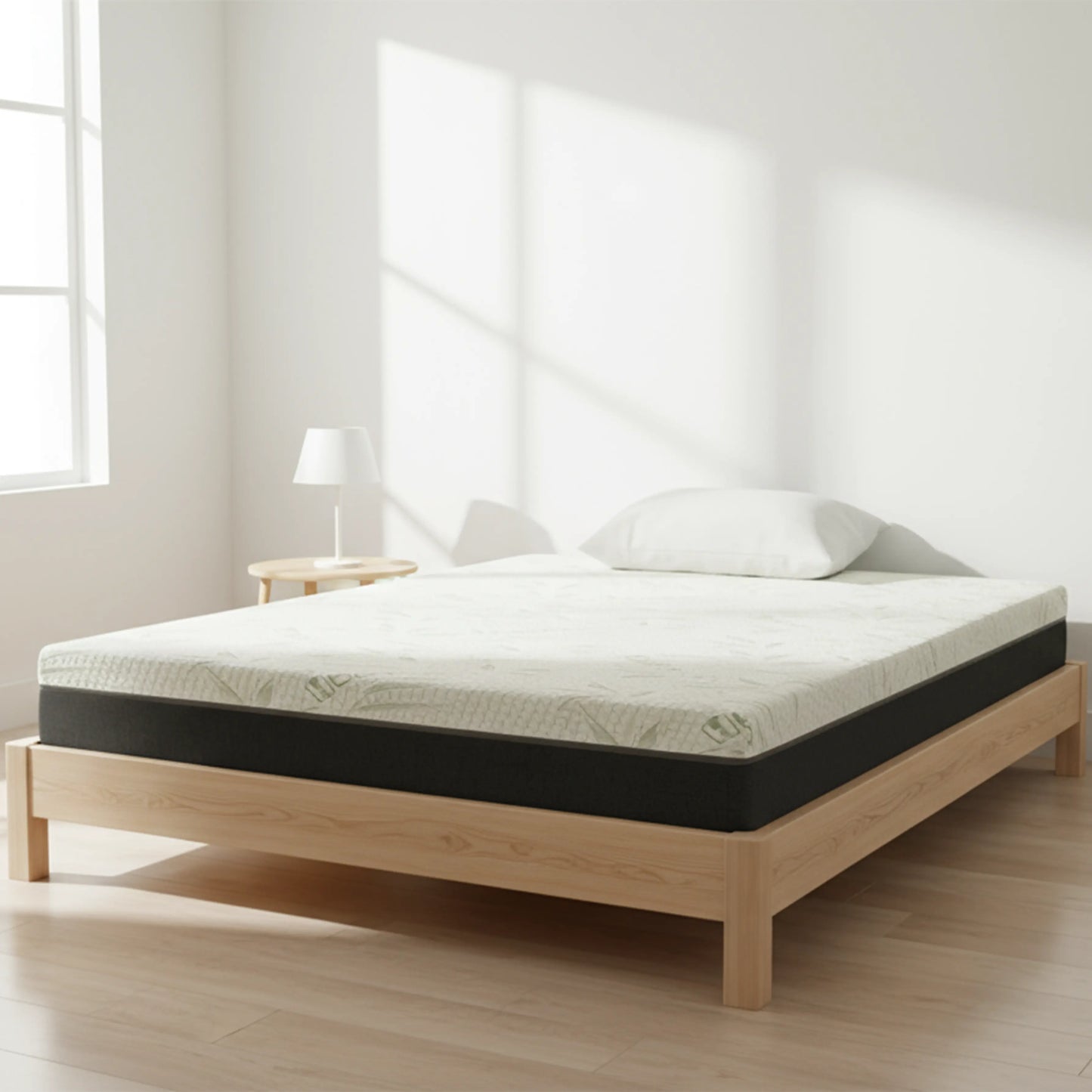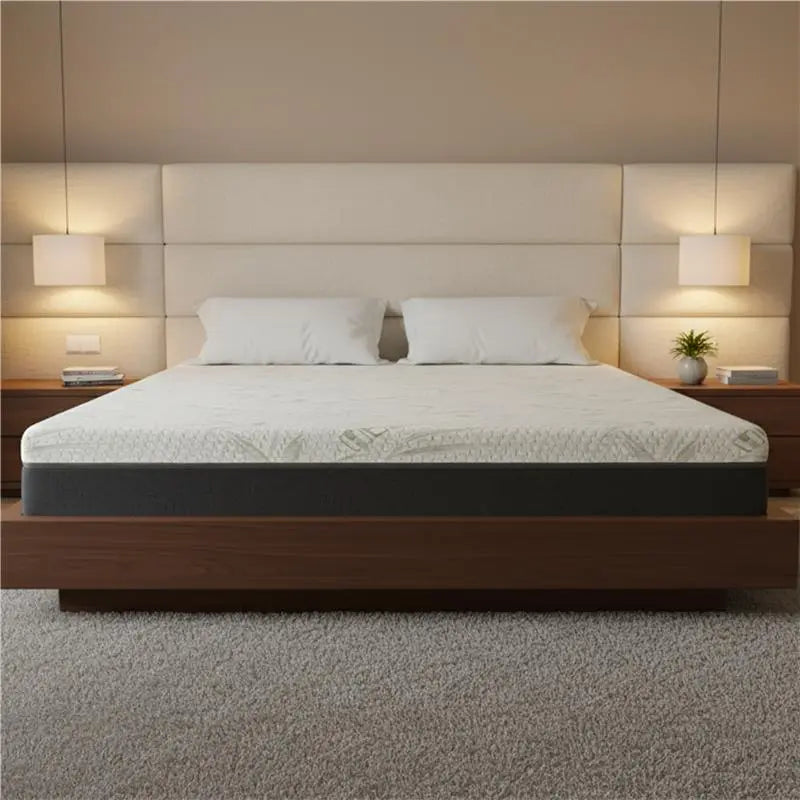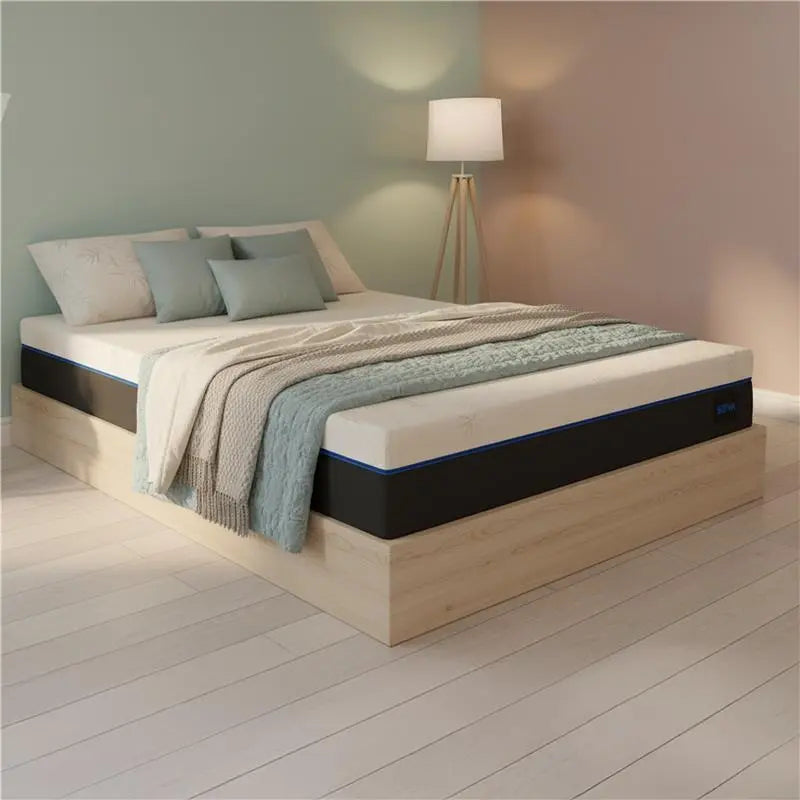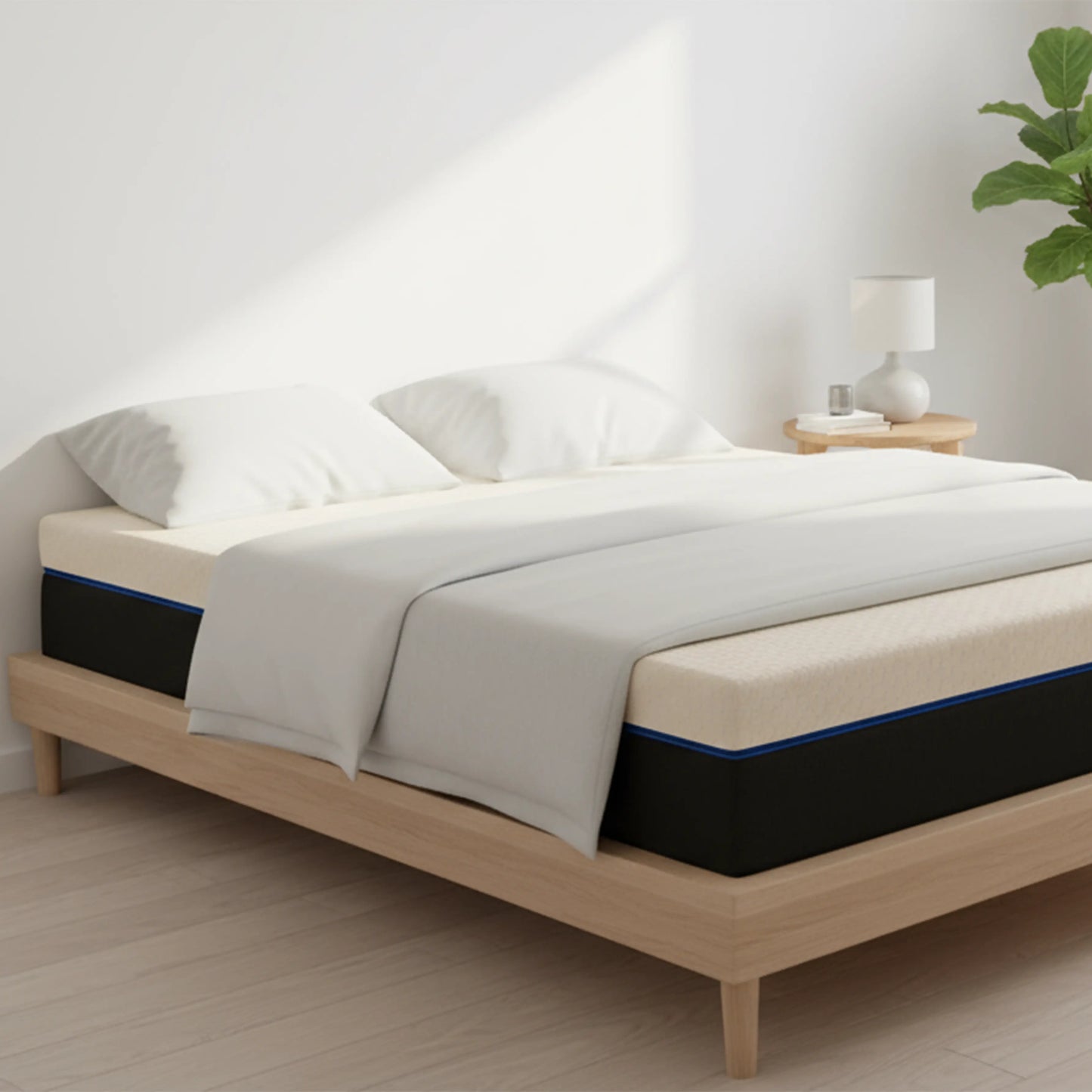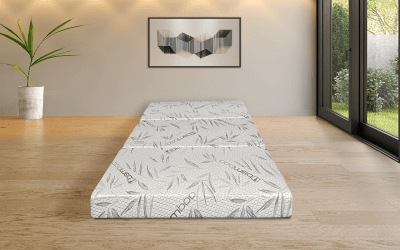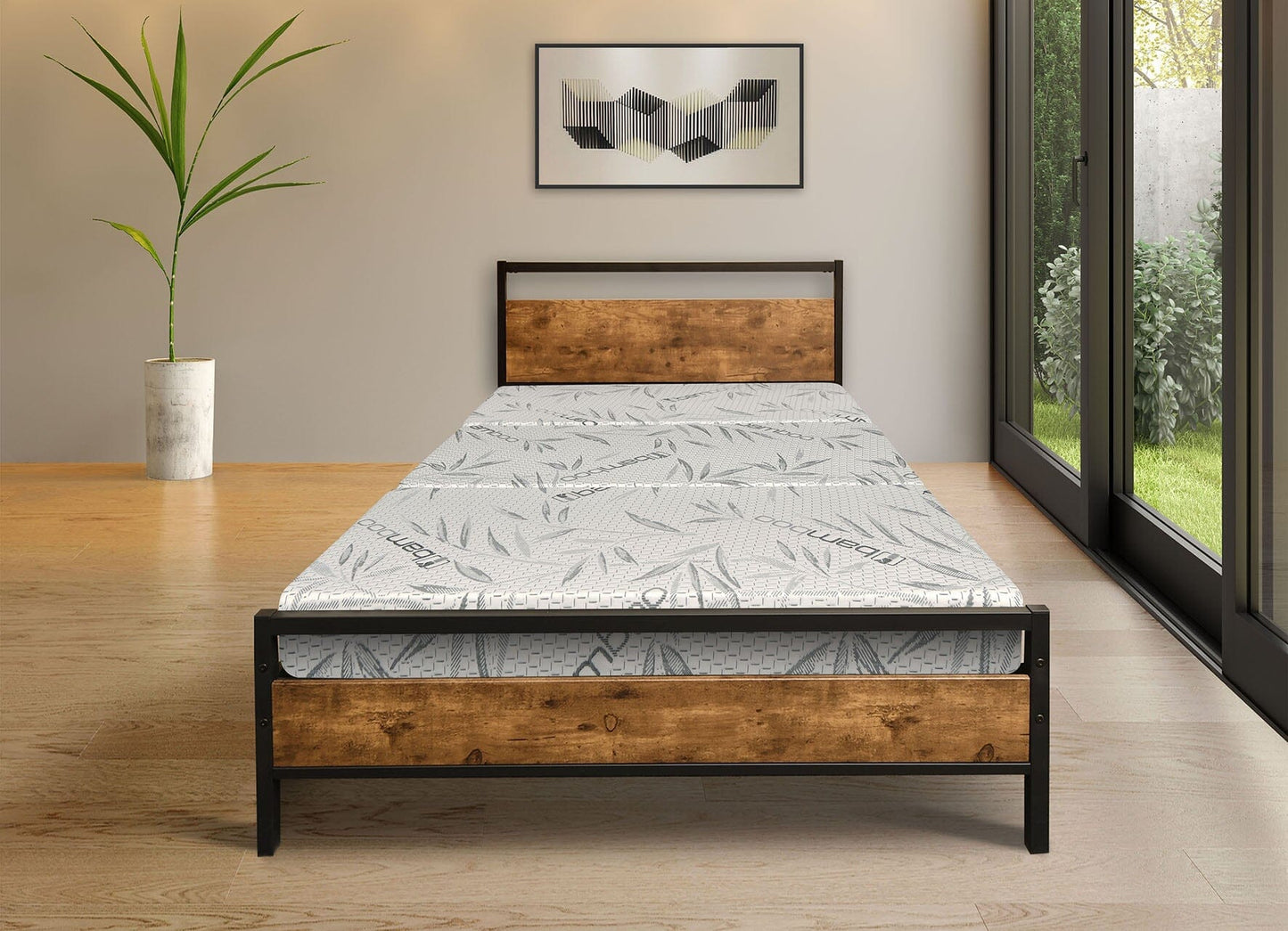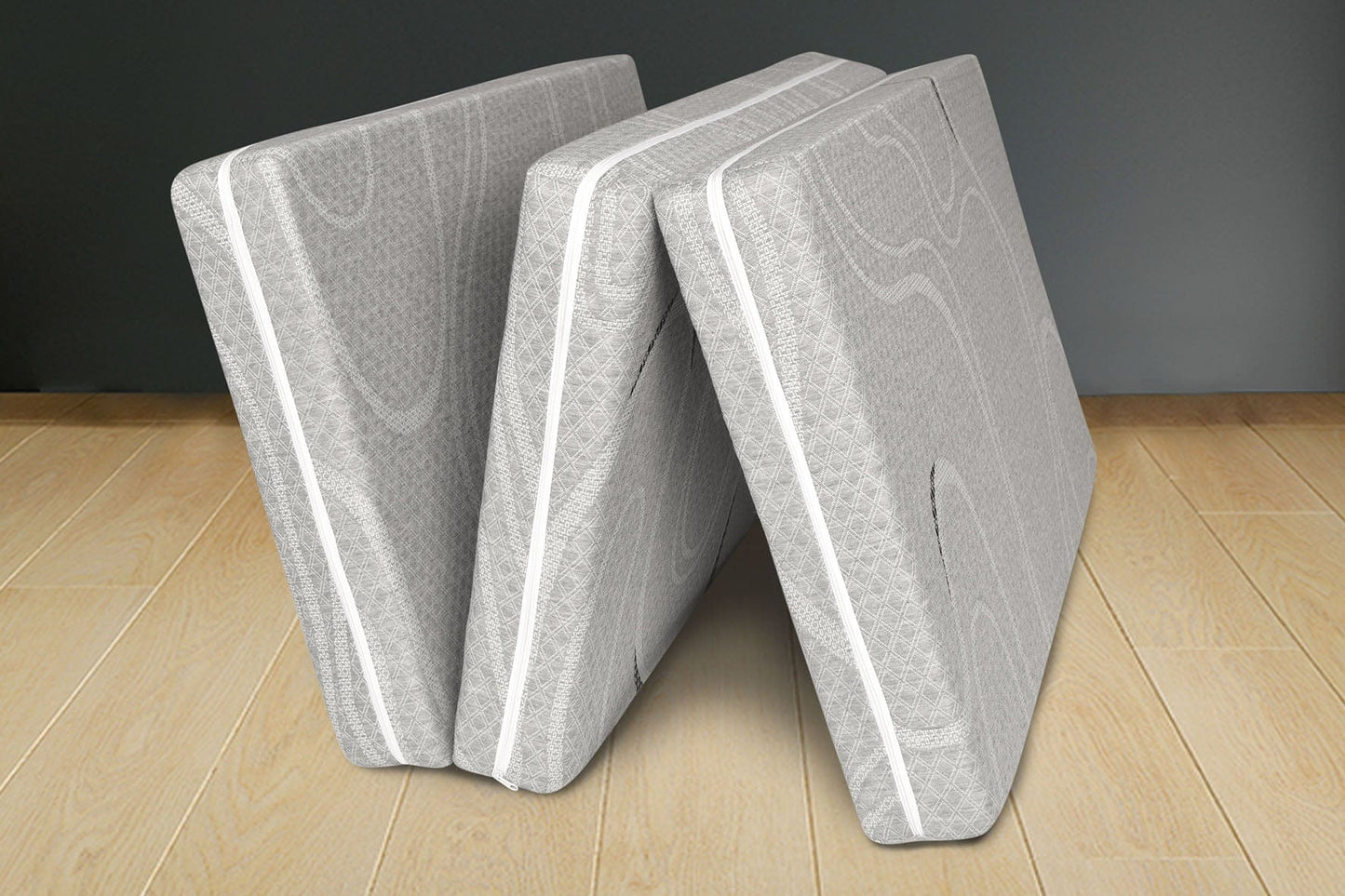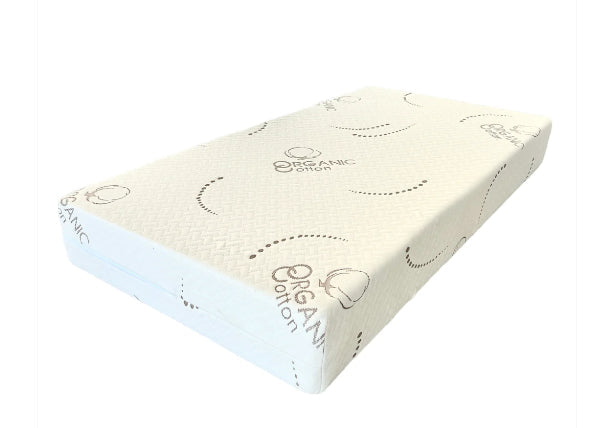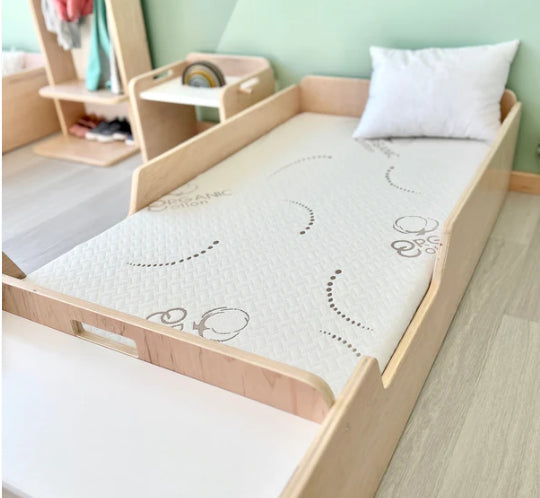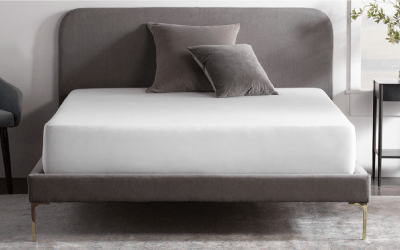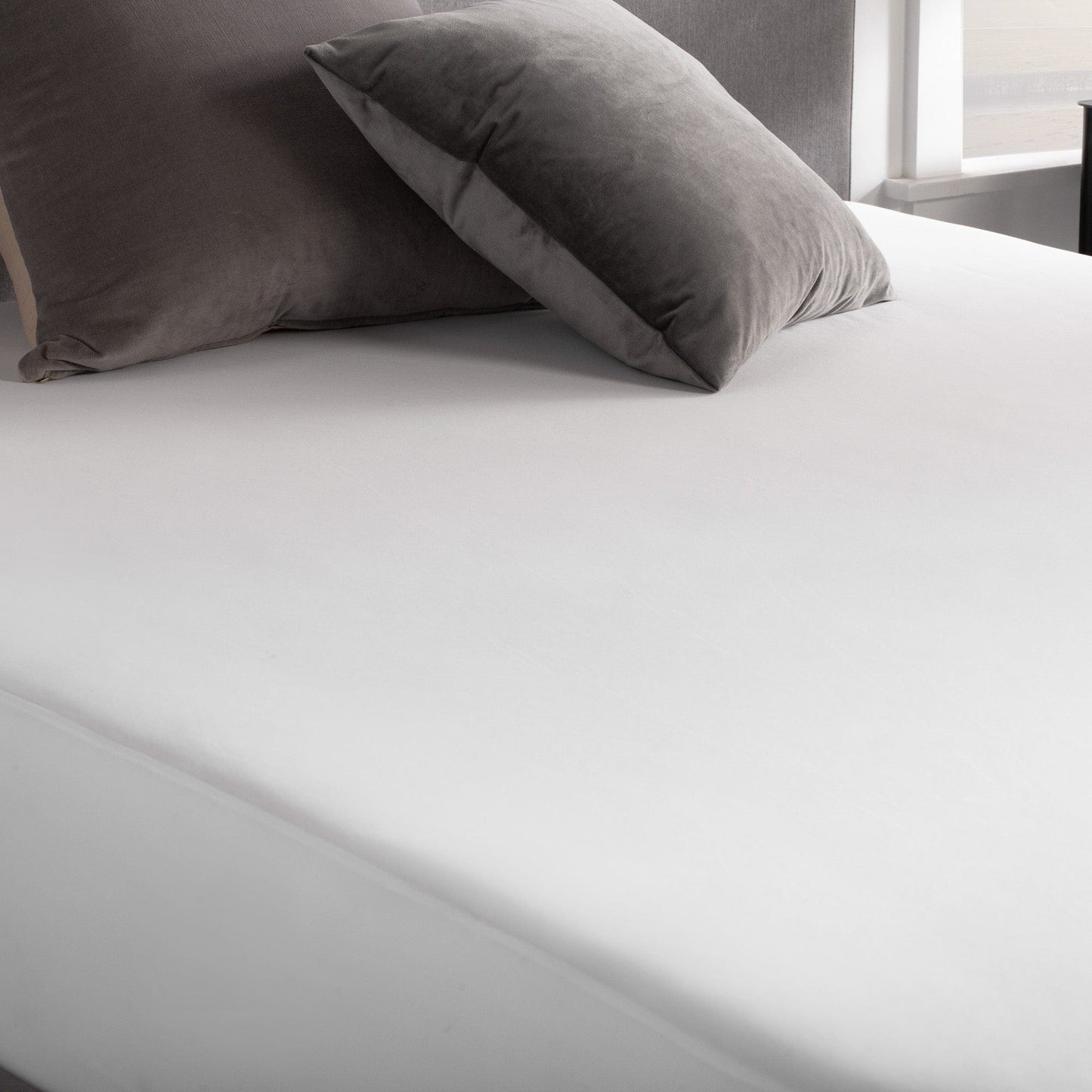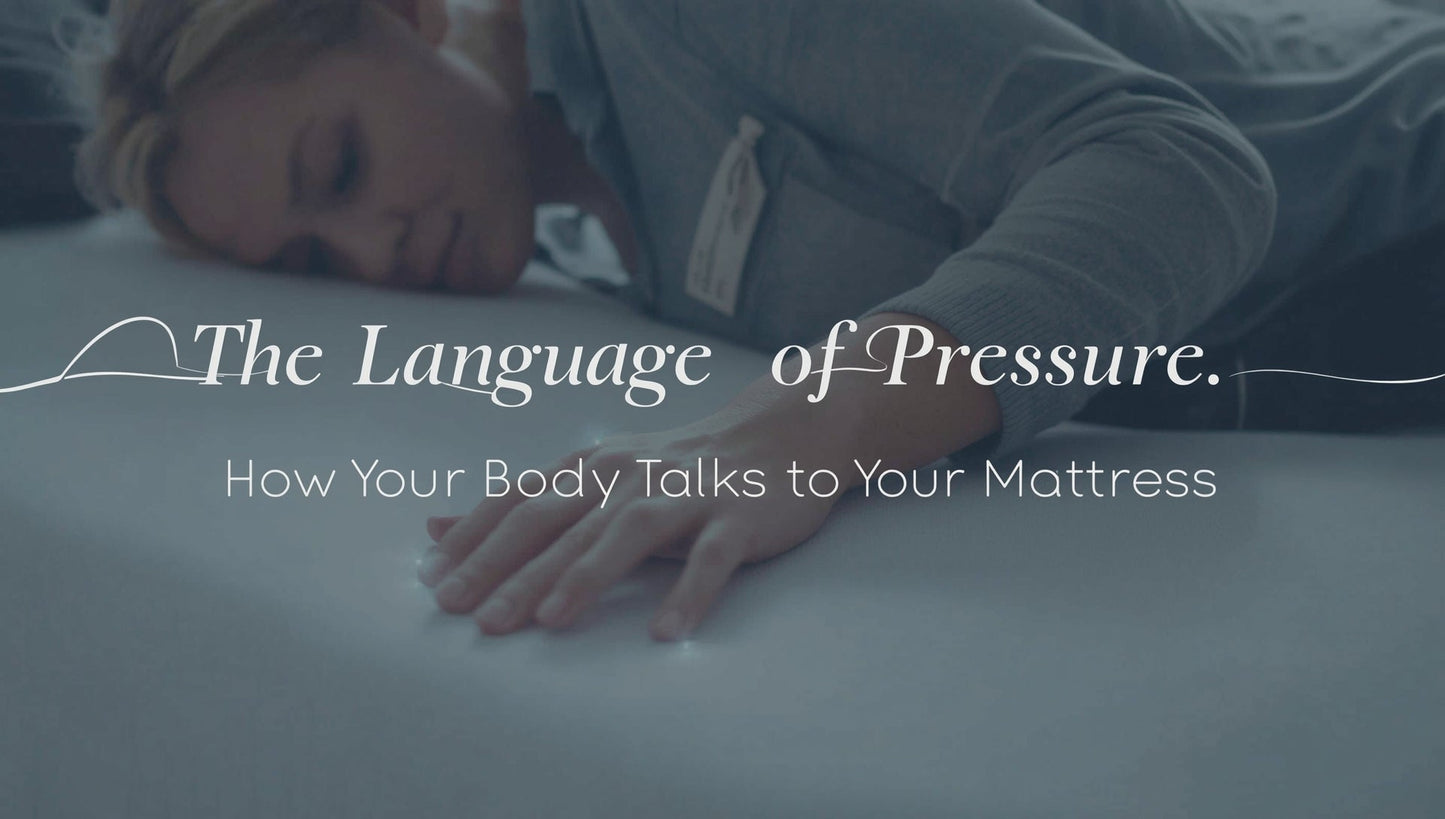Have you ever woken up with sore hips or a stiff lower back, wondering how your mattress “failed” you? What your body is really telling you is that something’s off in the interaction between your shape and the sleeping surface.
In the world of sleep science, there’s a subtle, continuous dialogue between your body and your mattress. That dialogue is expressed via body pressure points, alignment, and feedback, signaling whether your sleep setup is ideal.
In this post, we decode that exchange — how your body “speaks” to your mattress, how pressure mapping reveals comfort zones, and how body-intelligent mattresses respond. We’ll explore how body alignment during sleep, pressure relief mattress, responsive foam, ergonomic support, and sleep posture all tie into this hidden conversation.

Understanding Body Pressure & Alignment During Sleep
What Is Body Alignment During Sleep?
Think of your spine as forming natural curves — cervical, thoracic, and lumbar. A well-designed mattress supports these curves neutrally, neither pushing parts of your spine out of line nor letting them sag. That’s proper body alignment during sleep.
When alignment is off, your body fights the mattress to stay straight — muscles tense, pressure concentrates, and aches appear. Poor mattresses may flatten the lower back or force shoulders and hips into uncomfortable angles.
Where Pressure Builds: Key Body Pressure Points
Your body “speaks” through pressure concentrated on predictable zones:
-
Shoulders (especially for side sleepers)
-
Hips and pelvis
-
Lower back or lumbar area
-
Heels and calves
These body pressure points are the contact zones that push hardest against the surface. Too firm a mattress can restrict blood flow and cause soreness. A high-quality pressure relief mattress minimizes peaks while supporting the rest of the body.
The Science of Pressure Mapping: Reading the Body’s Signals
To really “see” how your body interacts with your mattress, engineers use pressure mapping technology. A sensitive mat or sensor grid records force distribution across the mattress surface, creating a visual map of pressure zones: blue = low pressure, green/yellow = moderate, red = high.
How Pressure Mapping Works
-
Sensor Grid: A mat filled with hundreds of pressure sensors lies between your body and the mattress.
-
Data Capture: It records pressure intensity in real time.
-
Visualization: Colored maps indicate gentle support (cooler tones) and stress zones (warmer tones).
-
Analysis: Sleep specialists identify comfort zones and tension areas to optimize body alignment during sleep.
Visualize a silhouette of a person overlaid with color patches — blue and green under thighs, yellow at shoulders, red at hips. Those red spots are your body pressure points crying for relief.
What Comfort Zones Tell Us
Comfort zones are areas where pressure remains balanced. When a mattress supports these evenly, it naturally improves sleep posture and reduces tossing or micro-adjustments. A pressure relief mattress that shows balanced pressure distribution is doing its job — maintaining spinal alignment and overall comfort.
How Your Mattress Responds: From Feedback to Adaptation
Your body doesn’t lie motionless all night. It shifts slightly — rolling, stretching, or curling. A high-quality mattress responds to these cues by adapting instantly to new contours. That’s where responsive foam and ergonomic support come into play.
The Role of Responsive Foam
Responsive foam (like premium memory foam or high-resilience polyfoam) deforms under pressure and contours around your body. Once weight shifts, it returns smoothly to its original shape. This responsiveness eliminates harsh pressure points and ensures consistent support.
The Power of Ergonomic Support
Ergonomic support means the mattress is structured to match the body’s natural posture. Firmer zones beneath your lumbar region keep your spine aligned, while softer zones under shoulders and hips allow slight sinking — promoting correct sleep posture and body alignment during sleep.
Together, responsive foam and ergonomic support let the mattress “listen” to your body, adjusting firmness or contour instantly to maintain balance.
Adaptive Materials = Smarter Sleep
Modern pressure relief mattresses use intelligent materials that sense, adapt, and respond. This ensures every inch of your body gets the precise support and softness it needs.
Memory Foam, Latex & Hybrid Layers
-
Memory Foam: Contours around body pressure points, offering deep pressure relief via body heat and weight.
-
Latex Foam: Naturally bouncy and breathable; provides faster responsiveness while maintaining firm ergonomic support.
-
Hybrid Designs: Combine responsive foam with pocket springs or microcoils for zoned comfort and consistent body alignment during sleep.
These combinations help maintain natural spinal curves, balance pressure, and improve sleep posture.
Dynamic Feedback & Smart Systems
Some advanced mattresses integrate embedded sensors to monitor pressure and sleep posture in real time. These “smart” mattresses subtly adjust firmness, lifting or releasing certain zones — creating a truly pressure relief mattress experience.
Imagine a surface that senses a sinking shoulder and adjusts automatically — that’s responsive foam technology at work, understanding your body’s language.
Reading the Body: From Pressure to Sleep Posture
Your pressure map also reveals your natural sleep posture:
-
Back Sleepers: Load is evenly spread, moderate pressure at hips and shoulders. Firm ergonomic support maintains curve alignment.
-
Side Sleepers: Pressure concentrates on shoulder and hip zones; softer responsive foam relieves targeted areas.
-
Stomach Sleepers: Pressure collects around chest and abdomen; medium-firm surface prevents lower back sagging, preserving body alignment during sleep.
Every posture tells the mattress something. A smart pressure relief mattress balances forces and encourages neutral alignment no matter how you sleep.
Why This Dialogue Matters
Ignoring the body-mattress communication can lead to chronic fatigue, back pain, and restless nights. When in harmony:
✅ Muscles recover faster
✅ Spine remains in natural alignment
✅ Circulation improves
✅ You wake up refreshed
Balanced body pressure points, consistent body alignment during sleep, and a high-quality pressure relief mattress equal deeper, restorative rest.
Seva’s Approach: Body-Intelligent Design
Seva integrates body intelligence and feedback in every mattress:
-
Layered Responsive Foam Systems: Contour gently while maintaining ergonomic support.
-
Zoned Comfort Technology: Varied firmness for optimized body alignment during sleep.
-
Adaptive Pressure Relief: Minimizes stress on major body pressure points.
-
Advanced Sleep Posture Support: Encourages natural sleep posture.
-
Material Innovation: Eco-friendly, breathable foams and hybrid coils for durability.
Every Seva mattress undergoes pressure mapping analysis to ensure ideal balance and support.
The Final Word: Listen to What Your Body Says
Your body constantly communicates — through curves, body pressure points, and movement. A smart mattress understands that language. By combining body alignment during sleep, advanced pressure relief mattress design, responsive foam, ergonomic support, and proper sleep posture, you create a feedback loop that promotes effortless rest.
When you lie on a Seva mattress, you aren’t just resting — you’re in conversation with a surface designed to respond intelligently.
Discover Seva’s Body-Intelligent Sleep Collection — because your body deserves a mattress that listens.
